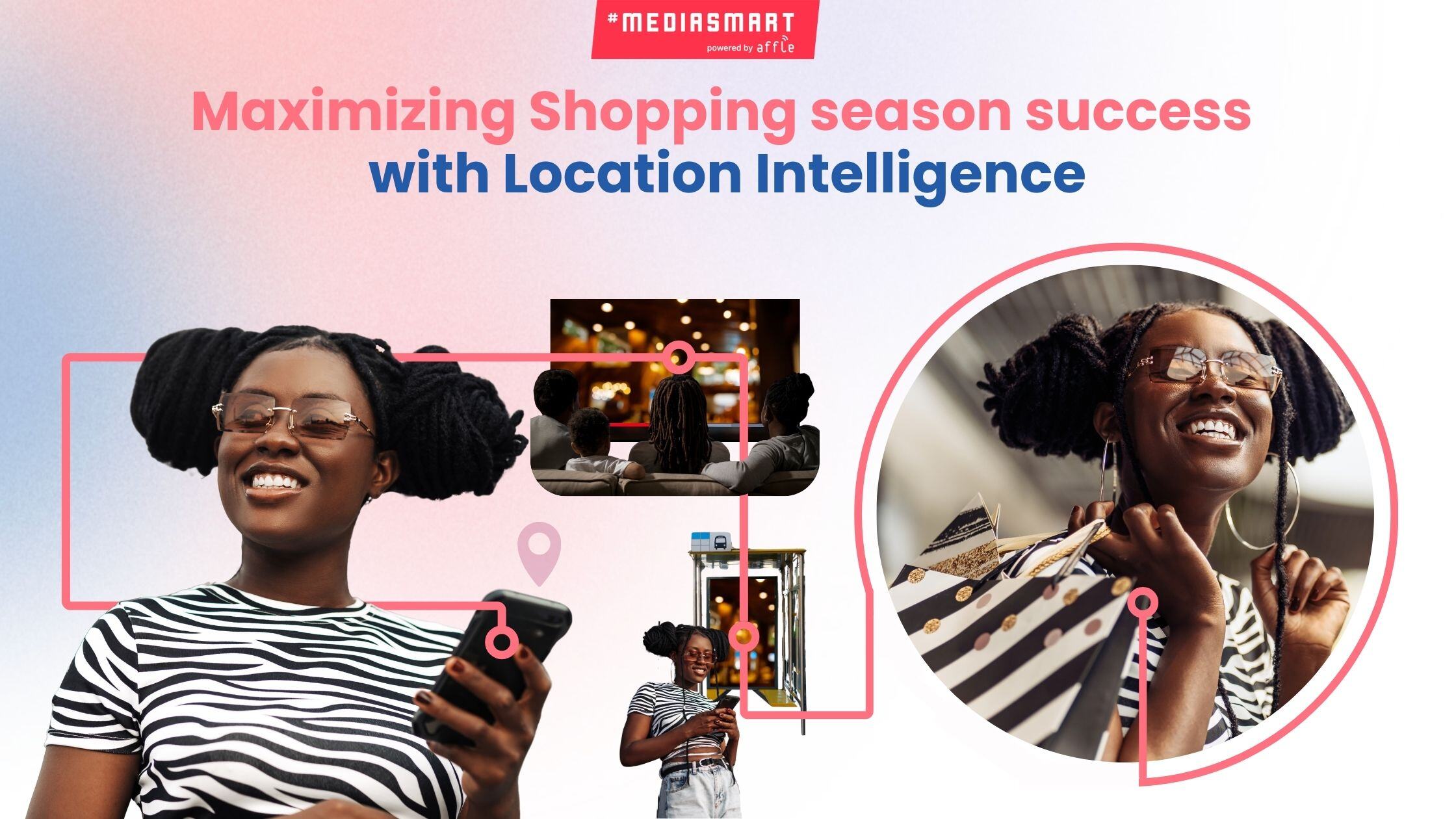Blog
Announcements, analysis and opinions on industry trends around the mobile programmatic world.

Subscribe now, and receive the latest programmatic content directly on your inbox!
Thank you for subscribing to our newsletter
China’s Singles’ Day along with Black Friday and Cyber Monday, which originated in the U.S., have expanded globally, driving billions in sales. More localized events such as Mexico’s “Buen Fin” are also part of the so-called “Shopping or Festive season” and present a massive opportunity for brands to engage with consumers. The forecast is staggering: 2024 holiday sales are projected to reach $1.372 trillion, with e-commerce sales expected to grow 9.5% to $271.58 billion[1].
With competition at its peak, brands need more than traditional marketing to stand out. 71% of consumers expect personalized shopping experiences, and according to Deloitte, retailers use geospatial data to achieve it[2]. Dynamic, hyper-localized campaigns reach shoppers at the right time and place, engaging and driving online and in-store purchases, with winner omnichannel strategies.
2024 Location intelligence stats for the Shopping season
By tapping into real-time location intelligence, brands can deliver highly targeted and personalized ads that drive both online and in-store conversions during the golden quarter peak shopping activity. Here’s supporting data to back it up:
> Retailers have improved marketing efficiency by 20% using location-based targeting (Deloitte).
> 31% of retailers report challenges in aligning eCommerce and in-store touchpoints, highlighting opportunities for cohesive programmatic ad strategies (Mastercard).
> 71% of consumers now expect personalized shopping experiences, and retailers are leveraging geospatial data to deliver them (Deloitte).
Understanding where and how customers interact with your brand has never been more crucial. Let’s explore the most relevant geospatial advertising strategies for holiday sales success in 2024.
5 geospatial advertising strategies for holiday sales success in 2024
Here are some powerful strategies to make the most of location data during this lucrative season:
> Geofencing in real-time and hyperlocal promotions: Set virtual boundaries around stores or key areas to send instant offers when shoppers enter. Automatically pair messages with specific areas, like neighborhoods, streets, or even radiuses from your stores or Points of interest. Perfect for connecting with local shoppers.
> Location-based audience segmentation: Use location data to target ads based on where groups go. Learn more about Location-based audiences.
> Competitor shopper targeting: Gather audiences or deliver real-time promotions near your competitors' stores. Steal the spotlight with better online or offline deals.
> Drive-to-store: Impact your customers right where it counts by using location insights to deliver personalized ads and measure how many people visit your store after seeing your ads. Explore further about Offline sync: drive to a physical store.
> Dynamic creatives: Use the location and weather information in real-time to your advantage to personalize ads. Rain? Push cozy indoor products. Sunny? Promote outdoor fun.
Using these strategies, brands can engage shoppers at the right time and place, creating more relevant experiences that boost sales and customer loyalty. Keep reading to see it in action, to navigate a location-powered omnichannel user journey.
Practical scenario: Location intelligence shaping the shopping season’s omnichannel experience
Let’s walk through a holiday shopping journey where location intelligence shapes every touchpoint, turning the experience into a seamless adventure.
Meet Sarah, a busy professional trying to juggle work, family, and holiday shopping. It’s mid-November, and Sarah knows time is running out to get everything on her list. While she’s out running errands, her phone shows a personalized ad offering her 25% off at a store just two blocks away. This isn’t random luck. It's hyper-local targeting at work. The store knows Sarah is close by, and this timely discount encourages her to make a quick detour. It is the perfect opportunity for advertisers to capture foot traffic, driving impulse visits that might not have happened otherwise.
Later that evening, Sarah relaxes in front of her smart TV. As she watches her favorite show, an HD video ad from her mother’s favorite perfume comes up promoting a holiday sale at a nearby shopping center. What a great gift idea! Far from the average holiday TV spot, this is measurable Connected TV advertising tailored to location. The system knows the CTV location and shows her a promotion relevant to her area. Advertisers reach consumers with ads that speak directly to their local context, driving both awareness and action.

Discover more about our captivating CTV formats
Conscious of the clock ticking on her holiday shopping, Sarah decides to read ‘The Ultimate Gift Guide for Everyone on Your List’ article, she notices a second ad from the same perfume brand with a map leading to the closest store. To increase her brand recall and cement her plans to visit the shopping center, a synced message is delivered to other devices within the same household. These ads are part of a drive-to-store strategy, designed to not just capture her attention but to guide her to shop.
The next day, Sarah is out and about again, and she passes by a digital billboard displaying the same perfume she saw on CTV. This is DOOH advertising in action, leveraging the area where CTV or Mobile ads have been served to create a connection between the surroundings and the advertising. Sarah has now seen the same promotion at home and while she’s out, making it more likely she’ll visit the store.
As Sarah continues her holiday shopping, she receives another ad on her phone—this time, a flash sale alert. With messaging changing depending on the time of day, the promotion is perfectly timed for her lunch break. This is powered by dynamic creative optimization (DCO), allowing the ad to adjust based on real-world factors. For advertisers, DCO offers a chance to maximize relevance and urgency. During the high-pressure shopping season, a personalized, real-time ad can make the difference between a purchase made now, later, or not at all.
.gif?width=1680&height=945&name=Location%20data%20Shopping%20season%20blog%20banner%20(3).gif)
By the end of the day, Sarah has checked off several items from her shopping list, and her journey from phone to store was smooth and cohesive. For advertisers, Sarah’s experience showcases how location intelligence turns an omnichannel journey into a powerful sales driver. From hyper-local targeting to CTV and DOOH advertising, each touchpoint created opportunities to engage Sarah in ways that felt personalized, timely, and effective.
Smart wrap up
With projected holiday sales nearing $1.372 trillion in 2024, the stakes couldn’t be higher.
This will sound cliché, but it’s worth emphasizing: it’s not just about being everywhere; it’s about being in the right place at the right time. Brands that tap into this tool can do more than just compete; they can connect with shoppers at key moments in their journey, making every interaction count. Whether it’s through hyper-local geofencing, dynamic creatives that adjust on the fly, or strategic drive-to-store campaigns, location data empowers advertisers to reach consumers like never before.
The brands leaning into strategies like competitor targeting and location-aware real-time offers cut through the noise and drive both online and offline success. The best part? This won’t just boost sales during the holiday rush; it’ll build stronger relationships with customers, turning seasonal wins into long-term loyalty.
Sources
[1] Guide to holiday retail | eMarketer
[2] Geospatial analytics use cases | Deloitte Insights
[3] 2023 Retail TouchPoints Report | Mastercard Data & Services
[4] What consumers want from Brands in 2024: 5 Key Stats | eMarketer
[5] Unlocking Value with Location Intelligence | BCG
Topics: drive-to-store, Geolocation, hyperlocation, online shopping, festive marketing, location intelligence in advertising, hyper-local targeting, drive-to-store strategies, shopping season, festive season
%20(1).jpg)

